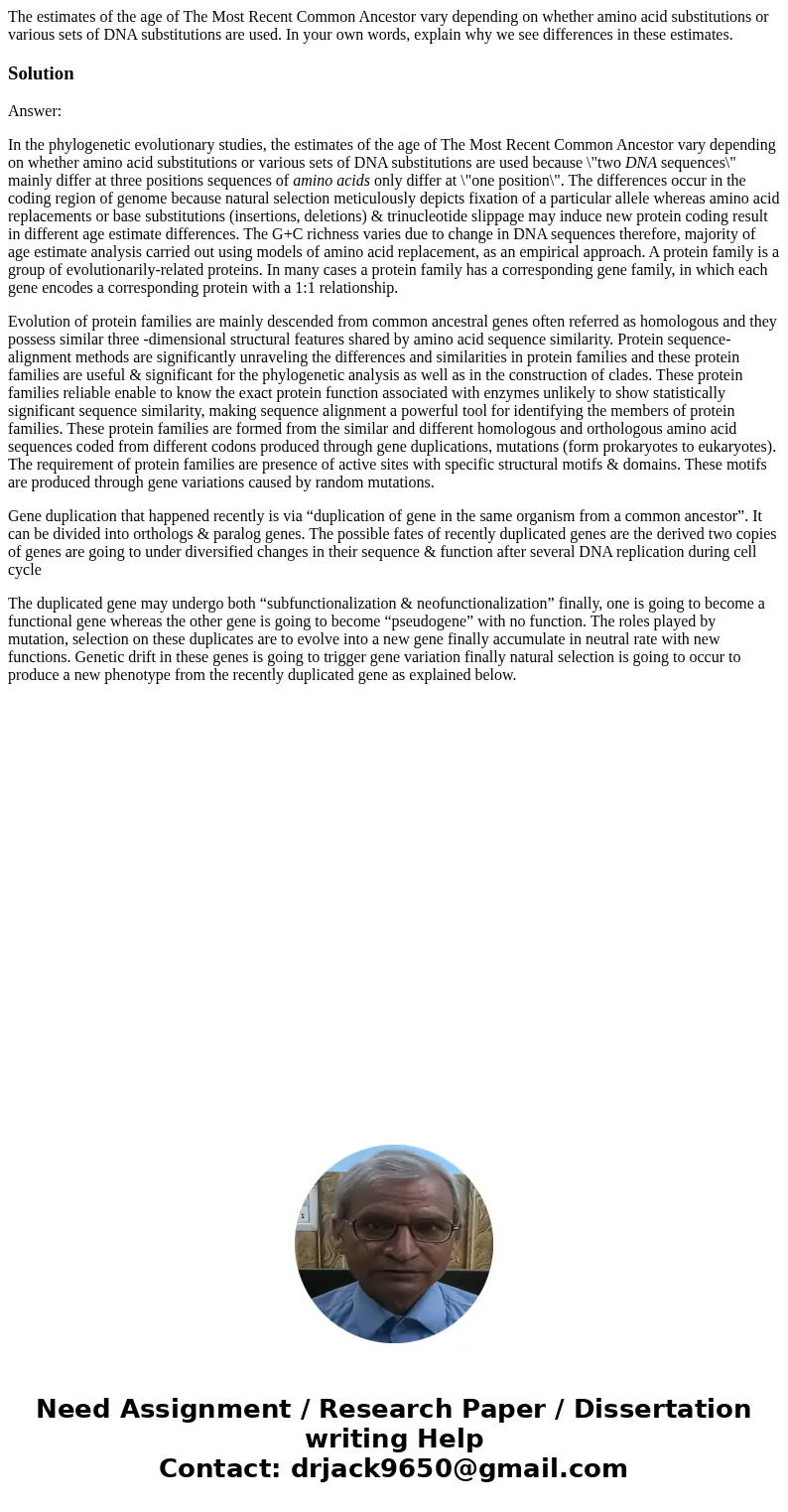The estimates of the age of The Most Recent Common Ancestor
The estimates of the age of The Most Recent Common Ancestor vary depending on whether amino acid substitutions or various sets of DNA substitutions are used. In your own words, explain why we see differences in these estimates.
Solution
Answer:
In the phylogenetic evolutionary studies, the estimates of the age of The Most Recent Common Ancestor vary depending on whether amino acid substitutions or various sets of DNA substitutions are used because \"two DNA sequences\" mainly differ at three positions sequences of amino acids only differ at \"one position\". The differences occur in the coding region of genome because natural selection meticulously depicts fixation of a particular allele whereas amino acid replacements or base substitutions (insertions, deletions) & trinucleotide slippage may induce new protein coding result in different age estimate differences. The G+C richness varies due to change in DNA sequences therefore, majority of age estimate analysis carried out using models of amino acid replacement, as an empirical approach. A protein family is a group of evolutionarily-related proteins. In many cases a protein family has a corresponding gene family, in which each gene encodes a corresponding protein with a 1:1 relationship.
Evolution of protein families are mainly descended from common ancestral genes often referred as homologous and they possess similar three -dimensional structural features shared by amino acid sequence similarity. Protein sequence- alignment methods are significantly unraveling the differences and similarities in protein families and these protein families are useful & significant for the phylogenetic analysis as well as in the construction of clades. These protein families reliable enable to know the exact protein function associated with enzymes unlikely to show statistically significant sequence similarity, making sequence alignment a powerful tool for identifying the members of protein families. These protein families are formed from the similar and different homologous and orthologous amino acid sequences coded from different codons produced through gene duplications, mutations (form prokaryotes to eukaryotes). The requirement of protein families are presence of active sites with specific structural motifs & domains. These motifs are produced through gene variations caused by random mutations.
Gene duplication that happened recently is via “duplication of gene in the same organism from a common ancestor”. It can be divided into orthologs & paralog genes. The possible fates of recently duplicated genes are the derived two copies of genes are going to under diversified changes in their sequence & function after several DNA replication during cell cycle
The duplicated gene may undergo both “subfunctionalization & neofunctionalization” finally, one is going to become a functional gene whereas the other gene is going to become “pseudogene” with no function. The roles played by mutation, selection on these duplicates are to evolve into a new gene finally accumulate in neutral rate with new functions. Genetic drift in these genes is going to trigger gene variation finally natural selection is going to occur to produce a new phenotype from the recently duplicated gene as explained below.

 Homework Sourse
Homework Sourse